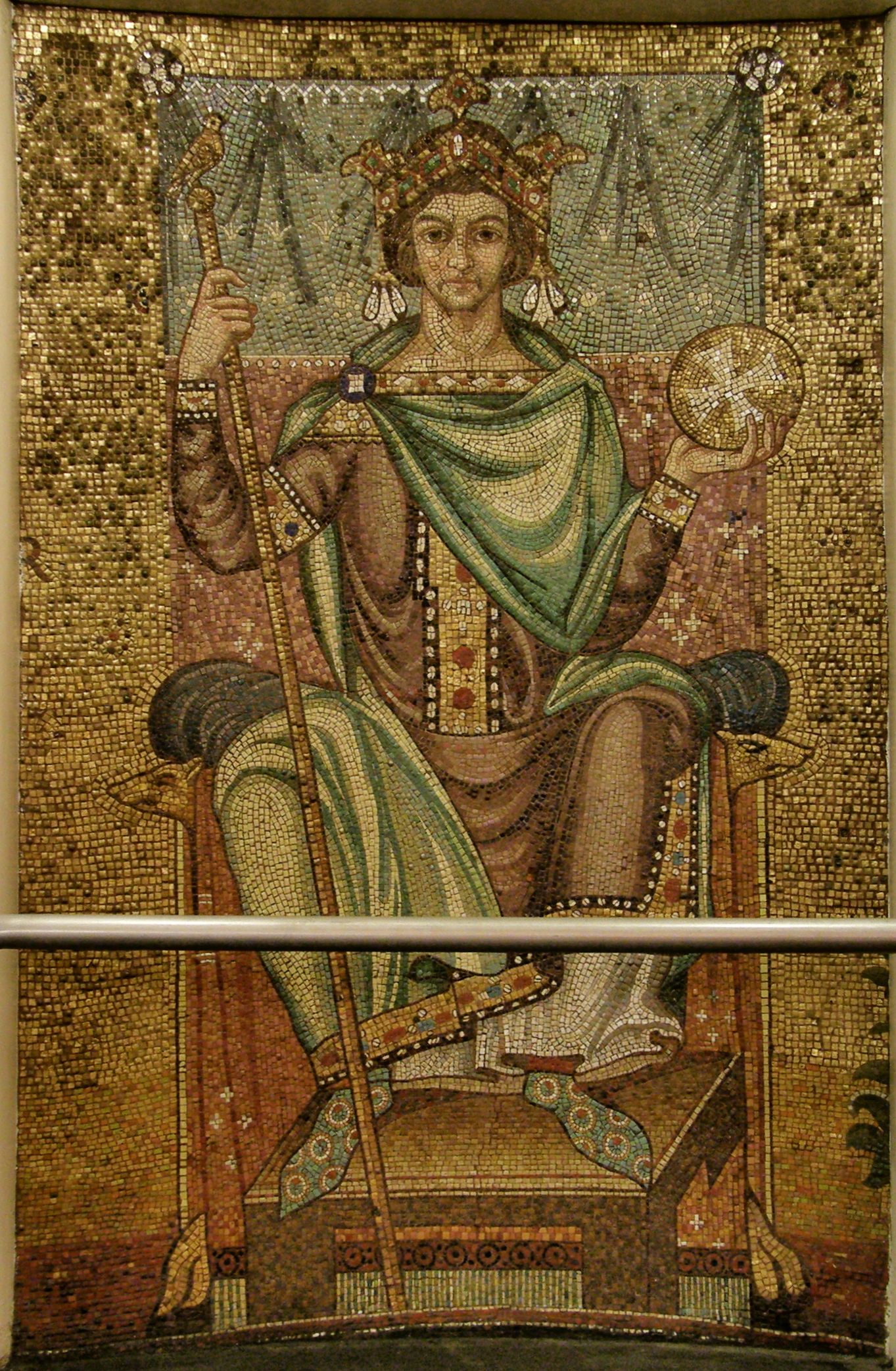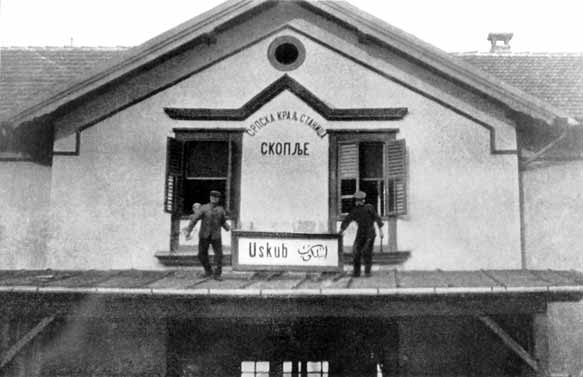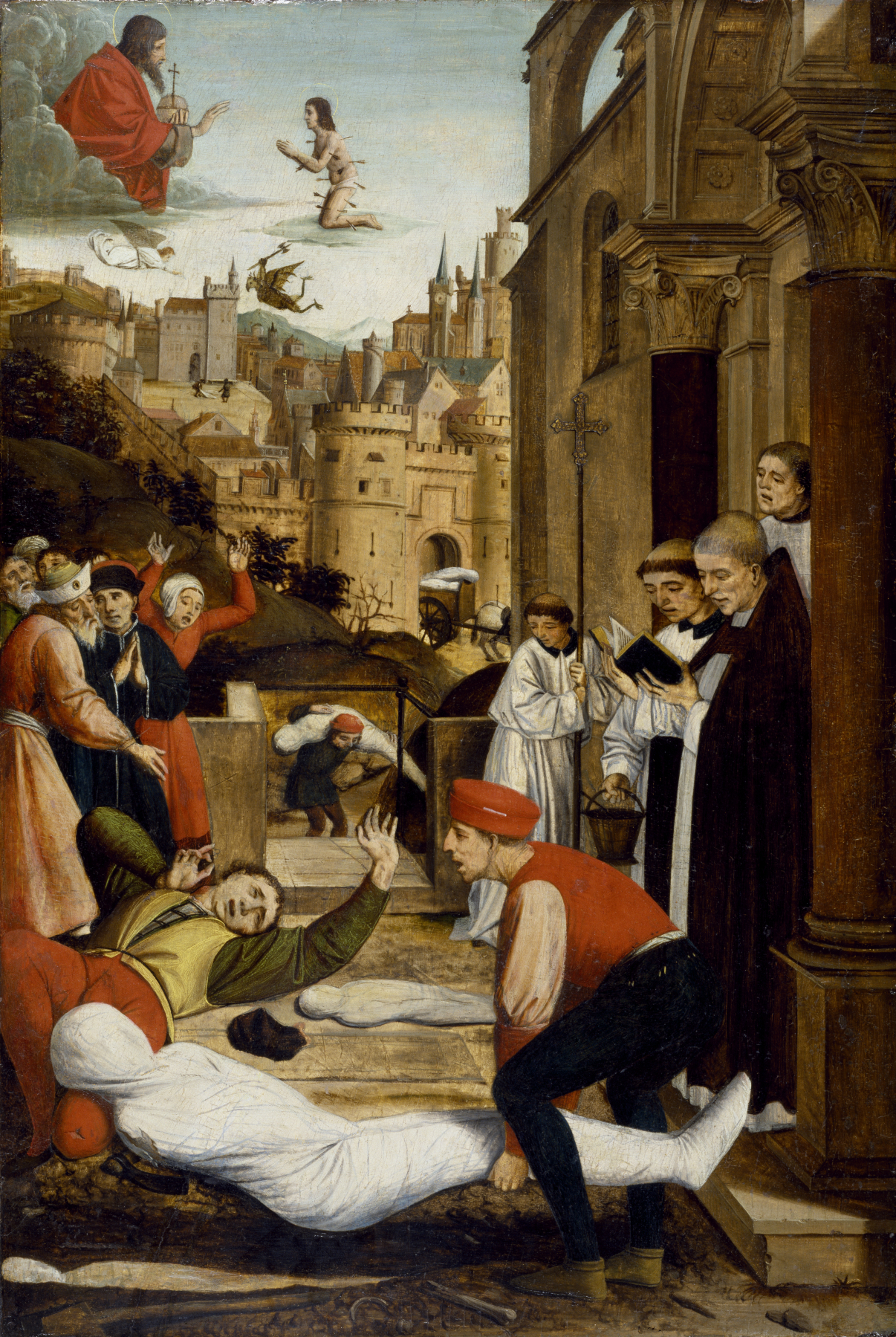|
1004
Year 1004 (MIV) was a leap year starting on Saturday of the Julian calendar. Events By place Byzantine Empire * Battle of Skopje: Emperor Basil II defeats the Bulgarian forces near Skopje (modern North Macedonia). Leaving his army behind, Samuel of Bulgaria manages to escape. Basil continues his campaign and besieges the fortress of Pernik. By the end of the year Basil has reconquered about half of the Bulgarian Empire. Europe * Spring – King Henry II crosses with an expeditionary force through the Brenner Pass to Trento. After initial military successes against Arduin of Ivrea, he receives the homage of the Italian clergy and Lombard noble families. * May 14 – Henry II is crowned King of Italy by Archbishop Arnulf II in Pavia. A quarrel ensues between the German troops and the Pavese citizens. Henry orders a massacre of the population in response, destroying the city. * Fall – Venetian-Byzantine forces defeat the Saracens at Bari. The citadel i ... [...More Info...] [...Related Items...] OR: [Wikipedia] [Google] [Baidu] |
Henry II, Holy Roman Emperor
Henry II (; ; ; 6 May 973 – 13 July 1024 AD), also known as Saint Henry, Order of Saint Benedict, Obl. S. B., was Holy Roman Emperor ("Romanorum Imperator") from 1014. He died without an heir in 1024, and was the last ruler of the Ottonian dynasty, Ottonian line. As Duke of Bavaria, appointed in 995, Henry became King of the Romans ("Rex Romanorum") following the sudden death of his second cousin, Emperor Otto III in 1002, was made King of Italy ("Rex Italiae") in 1004, and crowned emperor by Pope Benedict VIII in 1014. The son of Henry II, Duke of Bavaria, and his wife Gisela of Burgundy, Emperor Henry II was a great-grandson of German king Henry the Fowler and a member of the Bavarian branch of the Ottonian dynasty. Since his father had rebelled against two previous emperors, the younger Henry spent long periods of time in exile, where he turned to Christianity at an early age, first finding refuge with the Bishop of Freising and later during his education at the Hildesheim ... [...More Info...] [...Related Items...] OR: [Wikipedia] [Google] [Baidu] |
Skopje
Skopje ( , ; ; , sq-definite, Shkupi) is the capital and largest city of North Macedonia. It lies in the northern part of the country, in the Skopje Basin, Skopje Valley along the Vardar River, and is the political, economic, and cultural center of the country. As of the 2021 North Macedonia census, 2021 census, the city had a population of 526,502. Skopje covers 571.46 km² and includes both urban and rural areas, bordered by several Municipalities of North Macedonia, municipalities and close to the borders of Kosovo and Serbia. The area of Skopje has been continuously inhabited since at least the Chalcolithic period. The city — known as ''Scupi'' at the time — was founded in the late 1st century during the rule of Domitian, and abandoned in 518 after an earthquake destroyed the city. It was rebuilt under Justinian I. It became a significant settlement under the First Bulgarian Empire, the Serbian Empire (when it served briefly as a capital), and later under the Otto ... [...More Info...] [...Related Items...] OR: [Wikipedia] [Google] [Baidu] |
Arduin Of Ivrea
Arduin (; – 14 December 1015) was an Italian nobleman who was king of Italy from 1002 until 1014. In 990 Arduin became margrave of Ivrea and in 991 count of the Sacred Palace of the Lateran in Rome. In 1002, after the death of Emperor Otto III, the Italian nobles elected him king of Italy in the Basilica of San Michele Maggiore in Pavia, making him the first non-German on the Italian throne in 41 years. Arduin was considered the choice of the nobility and opposed by the episcopate, but he was initially supported by the archbishop of Milan. In Germany, however, Henry II was elected to succeed Otto, and he contested Arduin's election in Italy. In 1004, Henry invaded Italy, defeated Arduin and was crowned king in Pavia. He soon withdrew back to Germany, and Arduin was able to reassert his authority at least in the northwest of Italy for the next decade. Henry II invaded Italy again in 1014 and was proclaimed emperor in Rome, at which point Arduin was finally forced to relinqu ... [...More Info...] [...Related Items...] OR: [Wikipedia] [Google] [Baidu] |
Bolesław I The Brave
Bolesław I the Brave (17 June 1025), less often List of people known as the Great, known as Bolesław the Great, was Duke of Poland from 992 to 1025 and the first King of Poland in 1025. He was also Duke of Bohemia between 1003 and 1004 as Boleslaus IV. A member of the Piast dynasty, Bolesław was a capable monarch and a strong mediator in Central European affairs. He continued to proselytise Western Christianity among his subjects and raised Poland to the Kingdom of Poland, rank of a kingdom, thus becoming the first Polish ruler to hold the title of ''rex'', Latin for king. The son of Mieszko I of Poland by his first wife Dobrawa of Bohemia, Bolesław ruled Lesser Poland already during the final years of Mieszko's reign. When the country became divided in 992, he banished his father's widow, Oda of Haldensleben, purged his half-brothers along with their adherents and successfully reunified Poland by 995. As a devout Christian, Bolesław supported the missionary endeavours of Ada ... [...More Info...] [...Related Items...] OR: [Wikipedia] [Google] [Baidu] |
Battle Of Skopje
The Battle of Skopje occurred in 1004 within the vicinity of the city of Skopje. The battled was waged between forces of the Bulgarian Empire and the Byzantine Empire. The result was Byzantine victory. Background In 1003, Basil II launched a campaign against the First Bulgarian Empire and after eight months of siege conquered the important town of Vidin to the north-west. The Bulgarian counter strike in the opposite direction towards Odrin did not distract him from his aim and after seizing Vidin he marched southwards through the valley of the Morava destroying the Bulgarian castles on his way. Eventually, Basil II reached the vicinity of Skopje and learned that the camp of the Bulgarian army was situated very close on the other side of the Vardar river. Battle Samuil of Bulgaria relied on the high waters of the river of Vardar and did not take any serious precautions to secure the camp. Strangely the circumstances were the same as at the battle of Spercheios seven years ea ... [...More Info...] [...Related Items...] OR: [Wikipedia] [Google] [Baidu] |
Pavia
Pavia ( , ; ; ; ; ) is a town and comune of south-western Lombardy, in Northern Italy, south of Milan on the lower Ticino (river), Ticino near its confluence with the Po (river), Po. It has a population of c. 73,086. The city was a major political centre in the medieval period, being the capital of the Ostrogothic Kingdom from 540 to 553, of the Kingdom of the Lombards from 572 to 774, of the Kingdom of Italy (Holy Roman Empire), Kingdom of Italy from 774 to 1024 and seat of the Visconti of Milan, Visconti court from 1365 to 1413. Pavia is the capital of the fertile province of Pavia, which is known for a variety of agricultural products, including wine, rice, cereals, and dairy products. Although there are a number of industries located in the suburbs, these tend not to disturb the peaceful atmosphere of the town. It is home to the ancient University of Pavia (founded in 1361 and recognized in 2022 by the Times Higher Education World University Rankings, Times Higher Education ... [...More Info...] [...Related Items...] OR: [Wikipedia] [Google] [Baidu] |
Samuel Of Bulgaria
Samuel (also Samoil or Samuil; , ; , ; Old Church Slavonic: Самоилъ; died 6 October 1014) was the Tsar (''Emperor'') of the First Bulgarian Empire from 997 to 6 October 1014. From 977 to 997, he was a general under Roman I of Bulgaria, the second surviving son of Emperor Peter I of Bulgaria, and co-ruled with him, as Roman bestowed upon him the command of the army and the effective royal authority. As Samuel struggled to preserve his country's independence from the Byzantine Empire, his rule was characterized by constant warfare against the Byzantines and their equally ambitious ruler Basil II. In his early years, Samuel managed to inflict several major defeats on the Byzantines and to launch offensive campaigns into their territory. In the late 10th century, the Bulgarian armies conquered the Serb principality of Duklja and led campaigns against the Kingdoms of Croatia and Hungary. But from 1001, he was forced mainly to defend the Empire against the superior Byzantine arm ... [...More Info...] [...Related Items...] OR: [Wikipedia] [Google] [Baidu] |
First Bulgarian Empire
The First Bulgarian Empire (; was a medieval state that existed in Southeastern Europe between the 7th and 11th centuries AD. It was founded in 680–681 after part of the Bulgars, led by Asparuh of Bulgaria, Asparuh, moved south to the northeastern Balkans. There they secured Byzantine Empire, Byzantine recognition of their right to settle south of the Danube by Battle of Ongal, defeatingpossibly with the help of Seven Slavic tribes, local South Slavic tribesthe Byzantine army led by Constantine IV. During the 9th and 10th century, Bulgaria at the height of its power spread from the Danube Bend to the Black Sea and from the Dnieper River to the Adriatic Sea and became an important power in the region competing with the Byzantine Empire. As the state solidified its position in the Balkans, it entered into a centuries-long interaction, sometimes friendly and sometimes hostile, with the Byzantine Empire. Bulgaria emerged as Byzantium's chief antagonist to its north, resulting in ... [...More Info...] [...Related Items...] OR: [Wikipedia] [Google] [Baidu] |
Duchy Of Bohemia
The Duchy of Bohemia, also later referred to in English as the Czech Duchy, (Old Czech: ) was a monarchy and a Princes of the Holy Roman Empire, principality of the Holy Roman Empire in Central Europe during the Early Middle Ages, Early and High Middle Ages. It was formed around 870 by Czechs as part of the Great Moravian realm. Bohemia proper, Bohemia separated from disintegrating Great Moravia after Duke Spytihněv I, Duke of Bohemia, Spytihněv swore fealty to the East Francia, East Frankish king Arnulf of Carinthia, Arnulf in 895. While the Bohemian dukes of the Přemyslid dynasty, at first ruling at Prague Castle and Levý Hradec, brought further estates under their control, the Christianization of Moravia, Christianization initiated by Saints Cyril and Methodius was continued by the Frankish bishops of Roman Catholic Diocese of Regensburg, Regensburg and Roman Catholic Diocese of Passau, Passau. In 973, the Roman Catholic Archdiocese of Prague, Diocese of Prague was founded t ... [...More Info...] [...Related Items...] OR: [Wikipedia] [Google] [Baidu] |
Maria Argyropoulina
Maria Argyra (also Argyre or Argyropoulina) (; died 1006 or 1007), of the Argyros family, was the great-granddaughter of the Byzantine emperor Romanos I Lakapenos, cousin of the emperors Basil II and Constantine VIII, and sister to the Byzantine emperor Romanos III Argyros. In the ''Chronicon Venetum'' by John the Deacon, it is mentioned that Maria was the daughter of a noble patrician, called Argyropoulos, who was a descendant of the imperial family. This information is confirmed by the chronicle of Andrea Dandolo, who says that she was the niece of the emperor Basil II. More precisely, she was the sister of the future emperor Romanos III Argyros and the daughter of (Marianos?) Argyros, the son of Romanos Argyros and Agathe, daughter of the emperor Romanos I Lakapenos. This made her the second cousin of the emperors Basil II and Constantine VIII, likewise great-grandchildren of Romanos I, through another of his daughters, Helene. In 1004 Maria was married to Giovanni Orseolo ... [...More Info...] [...Related Items...] OR: [Wikipedia] [Google] [Baidu] |
Giovanni Orseolo
Giovanni Orseolo (981-1006/7) was the first Venetian to hold power in Dalmatia, holding the title of ''Dux Dalmatiae''. History Giovanni's father Pietro II Orseolo was the Doge of Venice, and his mother was Maria Candiano. In 1000 he was sent to Constantinople to work out the details of a plan his father and the Byzantine Emperor Basil II had been working on. Under this agreement the Venetians would conquer Dalmatia and then hold it as a protectorate under Byzantine suzerainty.(Norwich, John Julius. "Byzantium: The Apogee" (Alfred A. Knopf: New York, 1992) p. 257). While in Constantinople he was given a standard to use in his upcoming invasion of Dalmatia by the Bishop of Olivolo. He was successful in establishing Venetian power on the Dalmatian coast. In 1004 Giovanni married Maria Argyre, who was probably niece of Basil II and relative to the latter's second cousin and future emperor Romanos III Argyros. By this time Giovanni had been advanced to the rank of co-doge o ... [...More Info...] [...Related Items...] OR: [Wikipedia] [Google] [Baidu] |
Arnulf II (archbishop Of Milan)
Arnulf II (died 25 February 1018, in Milan) was Archbishop of Milan from 998 to 1018. He descended from the noble family of Arsago, being the son of Dagibert of Arsago. Among his brothers, Landulf of Arsago was Bishop of Brescia and Lanfrank of Arsago was the grandfather on the mother's side of Anselm of Besate. In 1001, Otto III, Holy Roman Emperor, at the time living in Rome, sent him to Byzantium to take a Byzantine princess as his future wife and empress. However Arnulf II, on his journey back to Rome, was reached by the news of the emperor's death.See the chronicle of Arnulf of Milan (Arnulfi Liber gestorum recentium). When Arduin of Ivrea, in lieu of Henry of Saxony (the future Henry II, Holy Roman Emperor), the dynastic successor of Otto III, was elected King of Italy and crowned in Pavia Pavia ( , ; ; ; ; ) is a town and comune of south-western Lombardy, in Northern Italy, south of Milan on the lower Ticino (river), Ticino near its confluence with the Po (river), ... [...More Info...] [...Related Items...] OR: [Wikipedia] [Google] [Baidu] |




